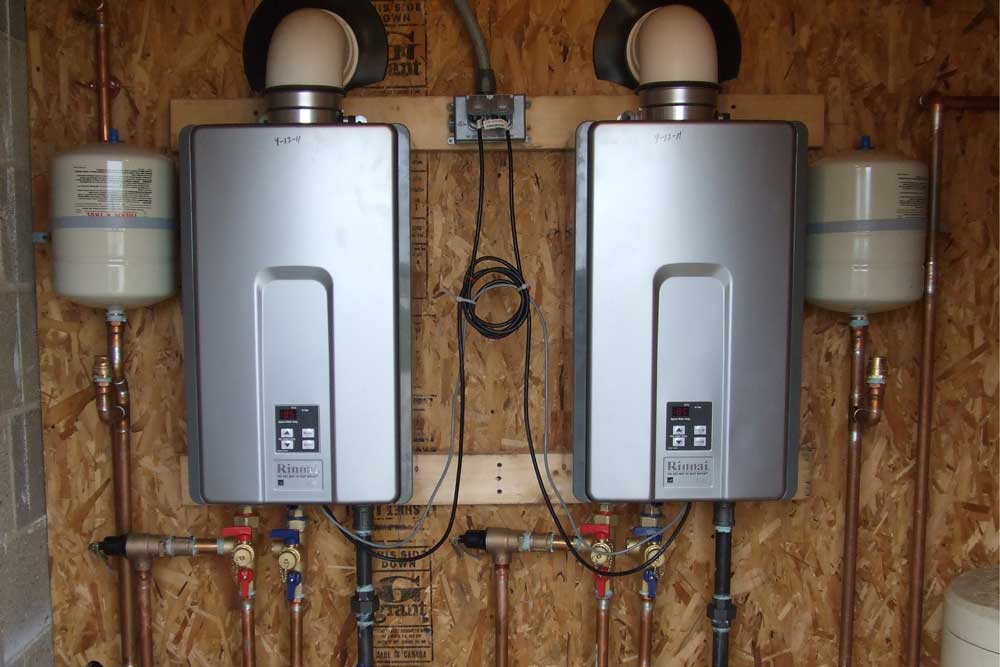Best Practices for Maintaining Your Home's Hot Water System
Best Practices for Maintaining Your Home's Hot Water System
Blog Article
This post below about How to Maintain Your Water Heater & Prolong its Life is especially entertaining. Read it yourself and see what you think about it.
:max_bytes(150000):strip_icc()/tankless-hot-water-system-in-the-basement-of-a-green-technology-home-529577258-77afda16fd494c6899a78000888c3204.jpg)
Warm water is vital for daily convenience, whether it's for a refreshing shower or cleaning recipes. To ensure your warm water system runs efficiently and lasts much longer, routine maintenance is vital. This post provides functional suggestions and understandings on how to preserve your home's warm water system to avoid disturbances and costly repair services.
Introduction
Maintaining your home's hot water system may appear overwhelming, however with a couple of simple steps, you can guarantee it runs smoothly for many years to find. This overview covers whatever from recognizing your warm water system to DIY maintenance ideas and recognizing when to hire expert aid.
Importance of Preserving Your Warm Water System
Normal upkeep not just extends the life-span of your hot water system but also ensures it operates effectively. Disregarding upkeep can result in reduced effectiveness, greater power costs, and also early failing of the system.
Signs Your Hot Water System Requirements Maintenance
Understanding when your warm water system requires interest can stop significant issues. Look out for signs such as inconsistent water temperature, strange noises from the heater, or rusty water.
Flushing the Water Heater
Flushing your water heater removes debris accumulation, improving effectiveness and prolonging its life.
Monitoring and Replacing Anode Rods
Anode rods avoid corrosion inside the storage tank. Evaluating and replacing them when worn out is crucial.
Complex Concerns Calling For Specialist Aid
Examples include major leakages, electric issues, or if your water heater is consistently underperforming.
Routine Expert Maintenance Conveniences
Specialist maintenance can include thorough inspections, tune-ups, and ensuring conformity with safety and security requirements.
Examining and Adjusting Temperature Level Settings
Adjusting the temperature setups makes sure optimal efficiency and security.
DIY Tips for Upkeep
You can do a number of maintenance tasks yourself to maintain your warm water system in leading problem.
Looking for Leaks
Routinely check pipes and links for leaks, as these can lead to water damage and greater bills.
Recognizing Your Hot Water System
Prior to diving into upkeep jobs, it's helpful to understand the basic components of your warm water system. Usually, this consists of the hot water heater itself, pipes, anode rods, and temperature level controls.
Regular Monthly Upkeep Tasks
Routine month-to-month checks can assist capture minor issues before they rise.
Evaluating Stress Relief Valves
Examining the pressure safety valve guarantees it functions properly and prevents extreme stress buildup.
Protecting Pipes
Shielding warm water pipes decreases warmth loss and can save energy.
When to Call a Specialist
While DIY upkeep is useful, some concerns require specialist expertise.
Final thought
Normal maintenance of your home's warm water system is important for effectiveness, long life, and cost savings. By adhering to these pointers and knowing when to look for professional help, you can make sure a reliable supply of hot water without unforeseen interruptions.
How to Maintain an Instant Hot Water Heater
Before tinkering with your hot water heater, make sure that it’s not powered on. You also have to turn off the main circuit breaker and shut off the main gas line to prevent accidents. Also turn off the water valves connected to your unit to prevent water from flowing into and out of the appliance. 2. When you’re done, you have to detach the purge valves’ caps. These look like the letter “T†and are situated on either side of the water valves. Doing so will release any pressure that has accumulated inside the valves while at the same time avoid hot water from shooting out and burning your skin. 3. When the purge valves’ caps are removed, you have to connect your hosing lines to the valves. Your unit should have come with three hoses but if it didn’t, you can purchase these things from any hardware or home repair shops. You can also get them from retail stores that sell water heating systems. Read the user’s manual and follow it to complete this task properly. When the hosing lines are connected, open the purge port’s valves. 4. You should never use harsh chemical cleaners or solutions when cleaning your unit. Make use of white vinegar instead. It should be undiluted and you’ll probably use about 2 gallons. 5. Now flush your water heater. This task should probably take about 40 minutes. We can’t give you specific directions for this because the procedure is carried out depending on the type, model and brand of your heater. With that being said, refer to the user’s manual. 6. When you’re done draining the unit, you have to turn off the purge port valves again. Remove the hosing lines that you earlier installed on each of the water valves. Put the valve caps (purge port) back in their respective places and be very careful so as not to damage the rubber discs that are found inside these caps. 7. Now that everything’s back in place, check your user’s manual again to find out how to reactivate your water heating system. 8. Once it is working, turn one of your hot water faucets on just to let air pass through the heater’s water supply pipes. Leave the tap on until water flows smoothly out of it. https://www.orrplumbing.com/blog/2014/september/how-to-maintain-an-instant-hot-water-heater/

As a person who reads about Water Heater Maintenance Tips You Can't Afford to Forget, I was thinking sharing that piece of content was really useful. Enjoyed our blog entry? Please quickly share it. Help another person find it. Thank you for your time. Kindly come by our website back soon.
Call Today Report this page